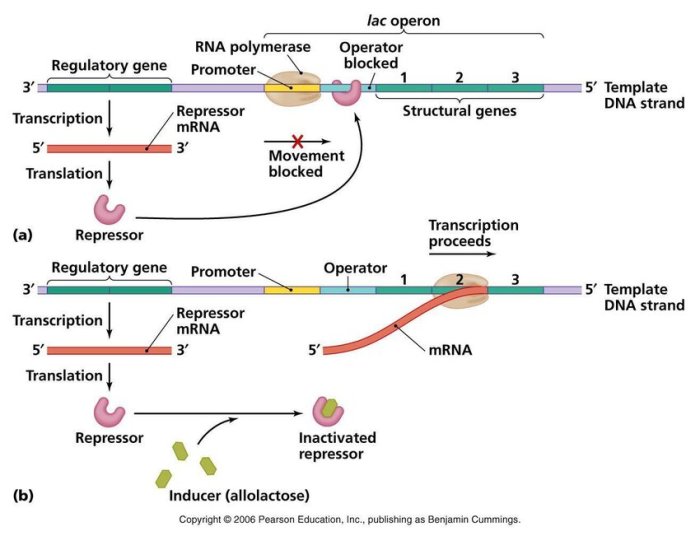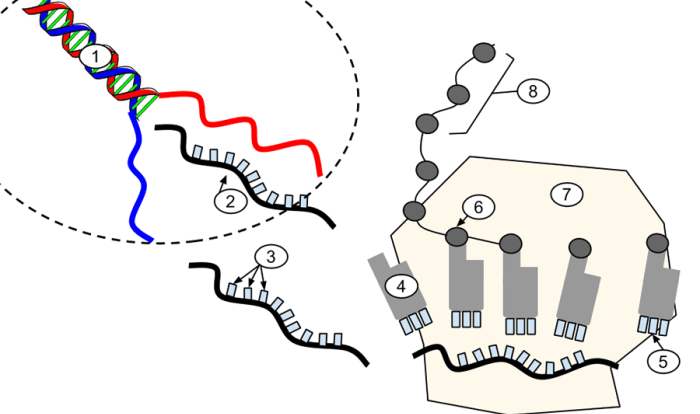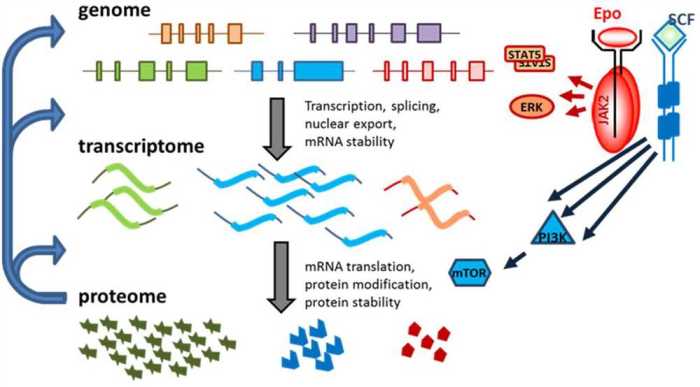The mutation of consensus sequence in the lac promoter, a crucial regulatory element in gene expression, unveils a fascinating tale of molecular biology. This discourse delves into the intricacies of these mutations, their effects on promoter activity, and their profound implications for cellular processes and biotechnology.
Introduction

The lac promoter is a well-studied regulatory region in bacteria that controls the expression of the lac operon. The consensus sequence of the lac promoter is 5′-TTGACA-3′, and it is recognized by the lac repressor protein. Mutations in the consensus sequence can alter the affinity of the lac repressor for the promoter, which can lead to changes in gene expression.
The lac promoter is a valuable tool for studying gene regulation. It has been used to identify the role of different DNA sequences in promoter function, and it has also been used to develop new methods for controlling gene expression.
Types of Mutations

There are three main types of mutations that can occur in the consensus sequence of the lac promoter:
- Point mutations: Point mutations are changes in a single nucleotide in the consensus sequence. These mutations can either increase or decrease the affinity of the lac repressor for the promoter.
- Insertions: Insertions are the addition of one or more nucleotides into the consensus sequence. These mutations can disrupt the binding of the lac repressor to the promoter.
- Deletions: Deletions are the removal of one or more nucleotides from the consensus sequence. These mutations can also disrupt the binding of the lac repressor to the promoter.
Methods for Detecting Mutations

There are a number of different methods that can be used to detect mutations in the consensus sequence of the lac promoter.
- DNA sequencing: DNA sequencing is the most accurate method for detecting mutations in the lac promoter. However, it is also the most expensive and time-consuming method.
- PCR: PCR is a less accurate method for detecting mutations in the lac promoter, but it is also less expensive and time-consuming than DNA sequencing.
- Gel electrophoresis: Gel electrophoresis is a simple and inexpensive method for detecting mutations in the lac promoter. However, it is not as accurate as DNA sequencing or PCR.
Consequences of Mutations

Mutations in the consensus sequence of the lac promoter can have a variety of consequences.
- Increased gene expression: Mutations that increase the affinity of the lac repressor for the promoter can lead to increased gene expression.
- Decreased gene expression: Mutations that decrease the affinity of the lac repressor for the promoter can lead to decreased gene expression.
- Altered gene expression: Mutations that alter the binding of the lac repressor to the promoter can lead to altered gene expression.
Applications of Mutation Analysis
Mutation analysis of the lac promoter has a number of applications in biotechnology and medicine.
- Identification of regulatory mutations: Mutation analysis can be used to identify mutations in the lac promoter that are responsible for changes in gene expression.
- Development of new drugs: Mutation analysis can be used to develop new drugs that target the lac promoter.
- Gene therapy: Mutation analysis can be used to develop gene therapies that correct mutations in the lac promoter.
FAQ Insights: Mutation Of Consensus Sequence In The Lac Promoter
What is the significance of the lac promoter in gene regulation?
The lac promoter is a well-characterized regulatory element that controls the expression of genes involved in lactose metabolism in bacteria. It serves as a paradigm for understanding the mechanisms of gene regulation in prokaryotes.
How do mutations in the consensus sequence affect promoter activity?
Mutations in the consensus sequence can alter the binding affinity of RNA polymerase, thereby affecting the rate of transcription initiation. Depending on the nature of the mutation, promoter activity can be enhanced, diminished, or abolished.
What are the methods for detecting mutations in the consensus sequence?
Various experimental techniques are employed to detect mutations in the consensus sequence, including DNA sequencing, gel electrophoresis, and PCR-based methods. Each method offers unique advantages and limitations.

